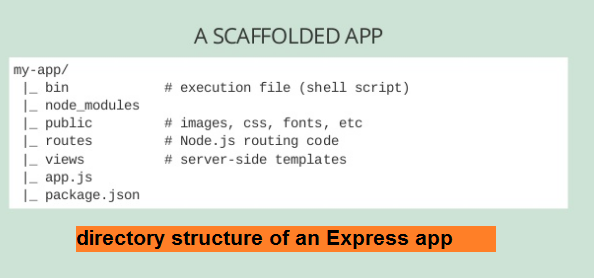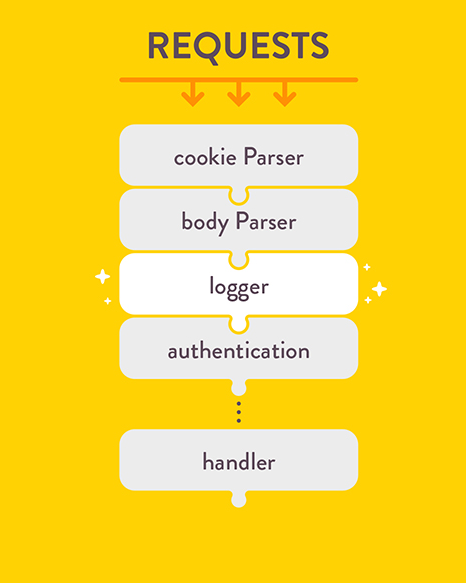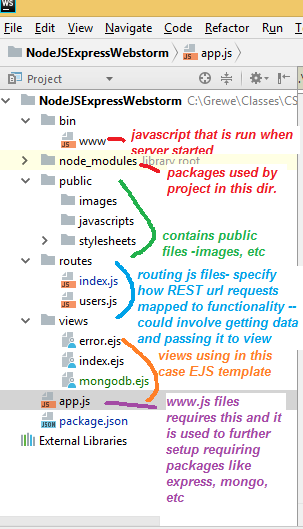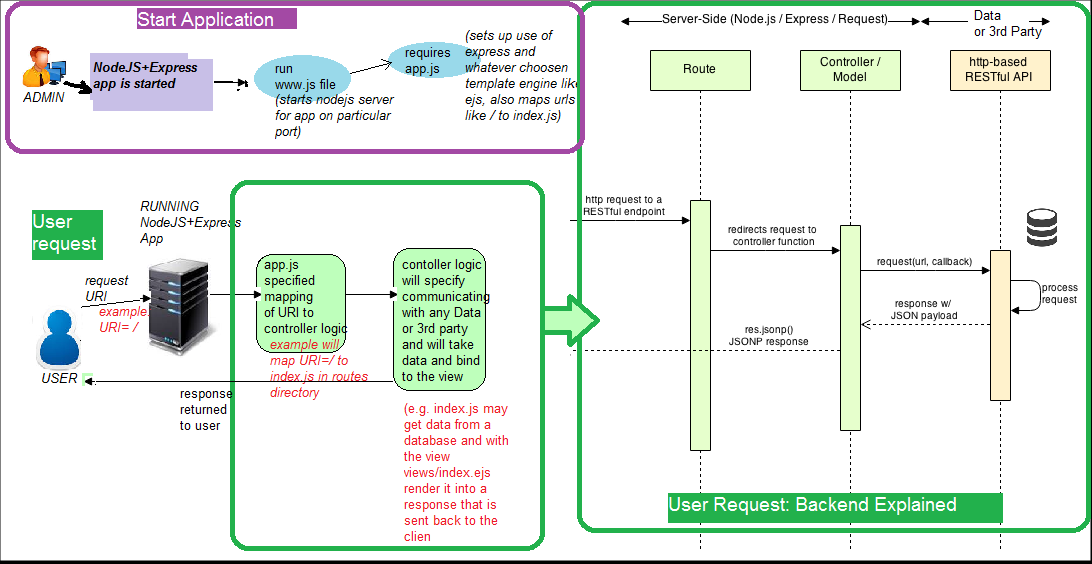Express: a simple Node.js Framework
minimal and flexible Node.js web application framework that provides a robust set of features for web and mobile applications. Provides EASIER WAY (than just nodeJS):
- it adds a DIRECTORY STRUCTURE

it is a minimalist
-
basic routing(mapping URLs -> code/static page), middleware, template engine and static files serving, sessions/cookies
-
(fast) I/O performance of Node.js doesn’t get compromised.
-
Not true MVC framework (people will add another package for the presenation layer -- like Angular JS)
-
because so light weight, as project grows and more devleopers may get codebase that does not apply same design priniciples -- is not a pattern oriented framework
front end setup
uses generator to setup project that defines folder/locations for content --- OR create a NodeJS+Express Project in WebStorm
|
middleware -- functions that have access to request/response objects
An Express application is essentially Node.js with a host of middleware functions,
CODE SAMPLE
|
 |
template engine
-
templates let you embed backend variables into an HTML file and when requested it renders the HTML file with the variables set to their actual values
-
uses eJS or Pug (template engine)
The basic flow (shown using filenames/structure from WebStorm IDE) for NodeJS+Express app
Remember we have the following file structure

This image shows the basic steps
1) START APPLICATION: launches nodejs+express app and listens for requests at the specified port in www.js. Also, sets up routing maps as specified in the required app.js file
2) USER REQUEST COMES IN: using routing information invokes the appropriate controller logic found in routes and this can involve calling other js programs that commuicate with Database/Data servers or 3rd party (like ups etc). Then the data (if any) is bound to a template (a view found in views directory) and rendered and the response is delivered to the user.

Routing, Static Files , Middleware, Form Processing, Authentication (simple using session)
